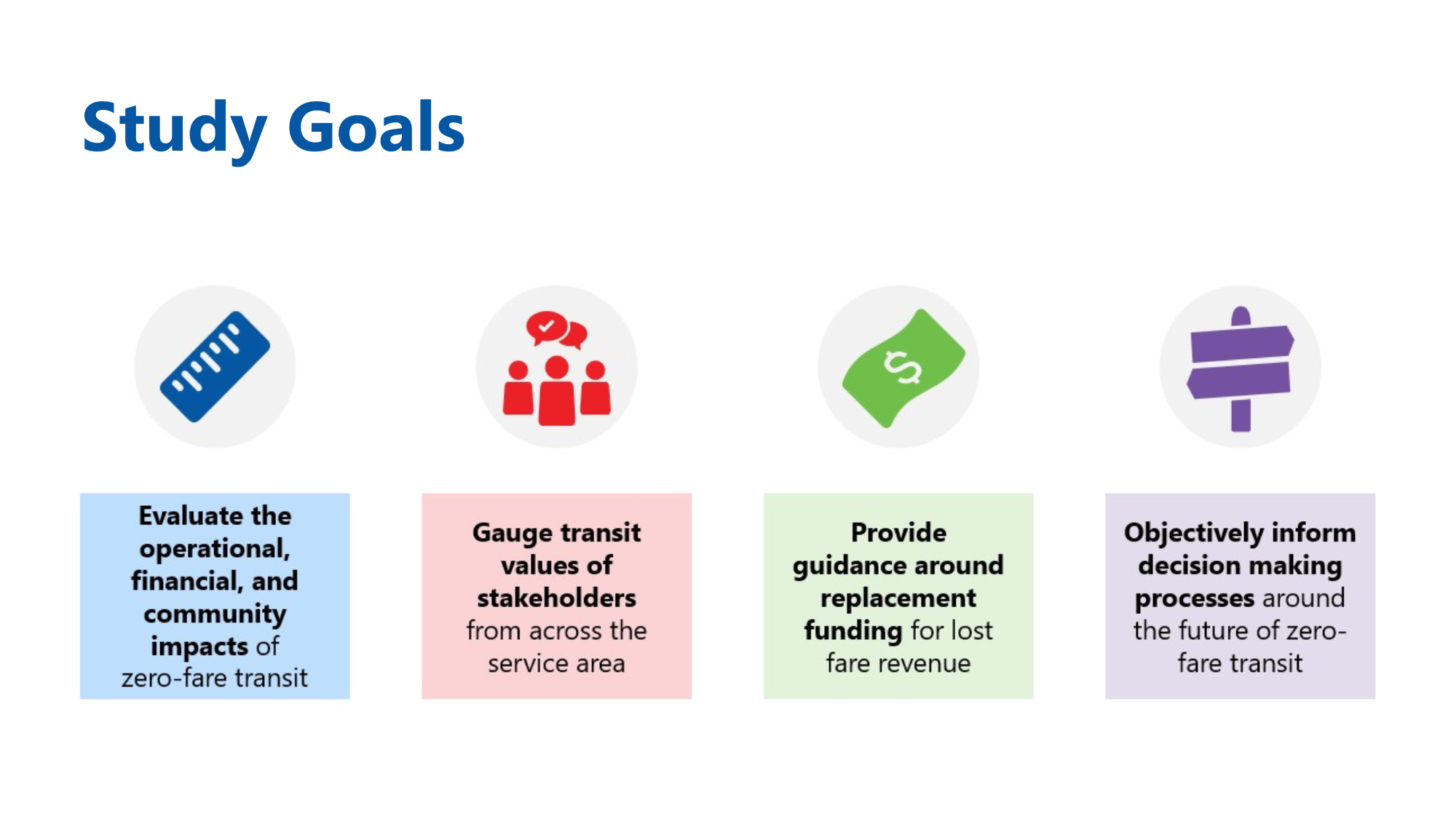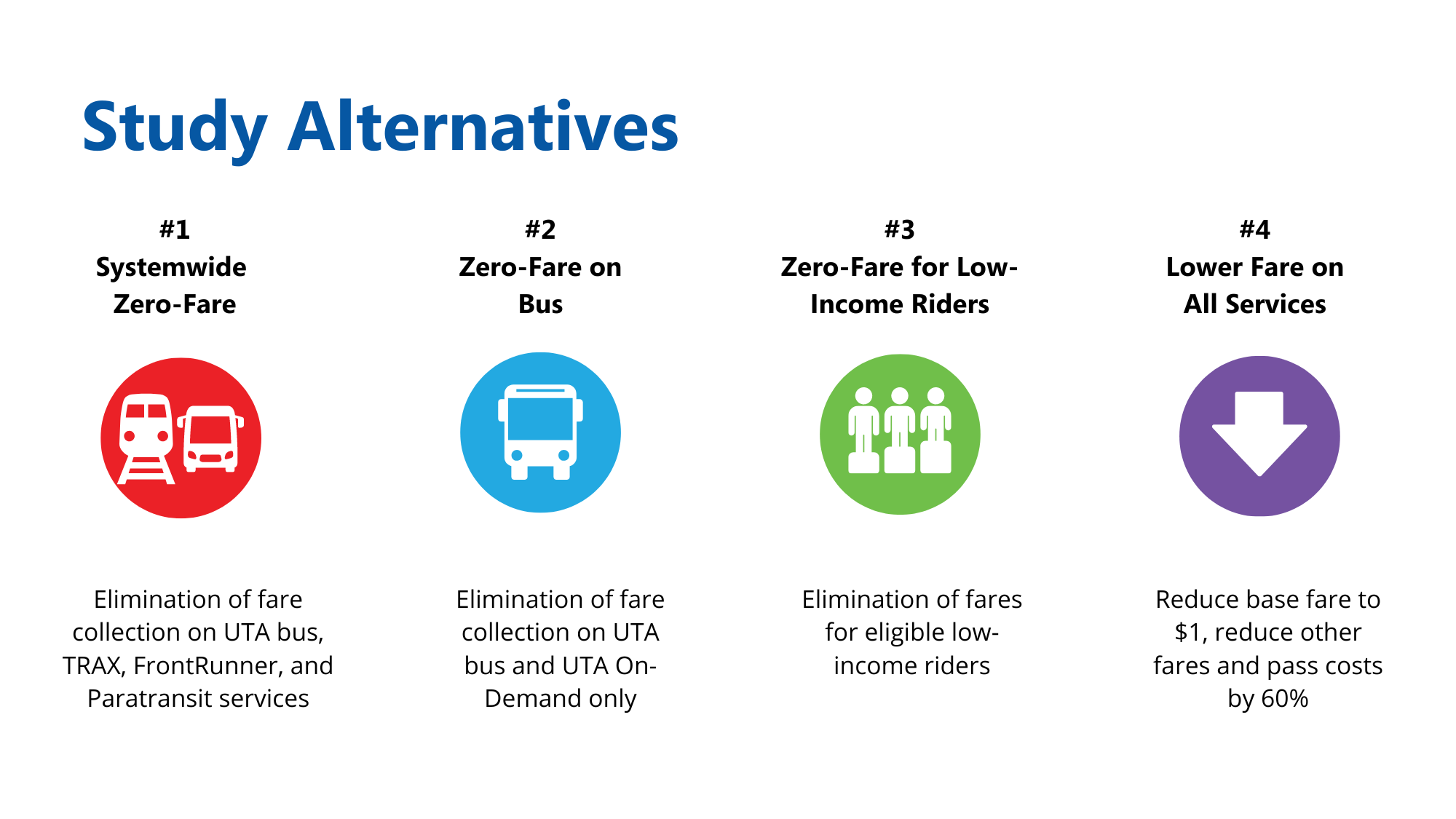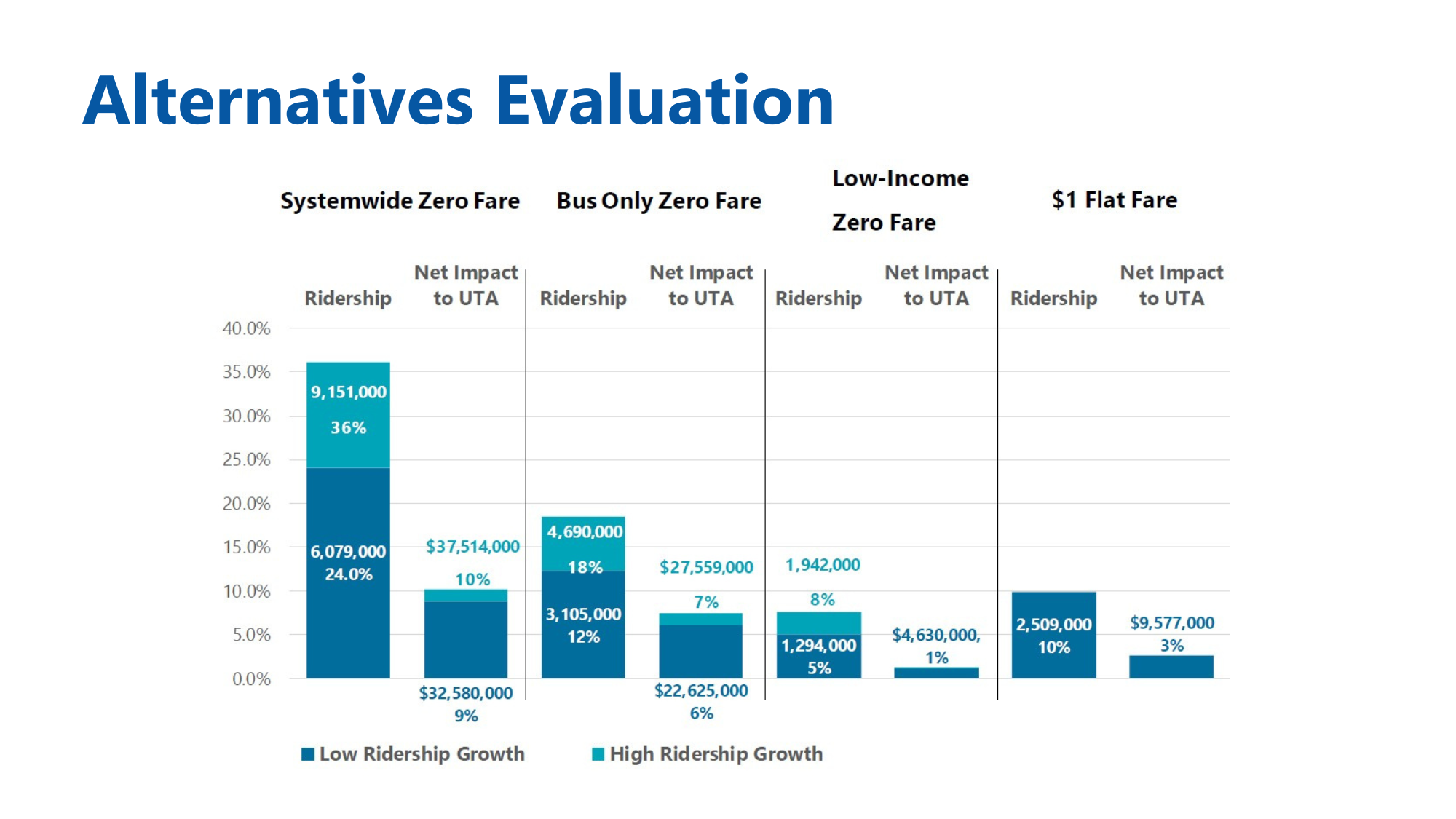The Wasatch Front Regional Council (WFRC), the Mountainland Association of Governments (MAG), the Utah Department of Transportation (UDOT), and the Utah Transit Authority (UTA) jointly conducted a study to evaluate the potential effects of partially or fully eliminating fares on the UTA system. The study was a data-informed, technical process intended to provide decision makers with information regarding the financial, operational, and community-related trade offs of four different alternatives to partially or fully eliminating transit fares.
In February 2022, UTA instituted “Free Fare February” to improve air quality and celebrate the 20-year anniversary of the Salt Lake Olympics. Ridership increased significantly across all transit modes. Data from this program was used to inform the zero-fare transit study.
The transportation agencies established goals to guide the study process. These goals included evaluating the impacts of a zero-fare transit system, engaging stakeholders to gather input, creating guidance regarding replacement revenue options, and providing objective information for decision makers to consider.
Four different alternatives were evaluated by costs and benefits. The analysis was organized into three main categories: operational efficiency, financial health, and community benefits. Operational efficiency metrics included service provision and performance. Financial health metrics included the relative costs and revenue considerations. Community benefits metrics included social equity and economic opportunity.


The study found that all four alternatives showed high ridership gain for relatively low cost (see figure below).
The study identified the following benefits of systemwide zero-fare transit:

For additional information regarding the Regional Zero-Fare Transit Study, please contact Julie Bjornstad.
